This month began Marvel’s newest comic book event, War of the Realms. Written by Jason Aaron with art by Russell Dauterman, the two tell a story that has been building in the pages of Aaron’s work on Thor comics since he took over writing the character with Thor: God of Thunder issue 1 back in 2012. His work on Marvel’s Thor has been lauded with thunderous praise and hailed as one of the great runs of the character. That said, I have always had a problem with the character. Until now.
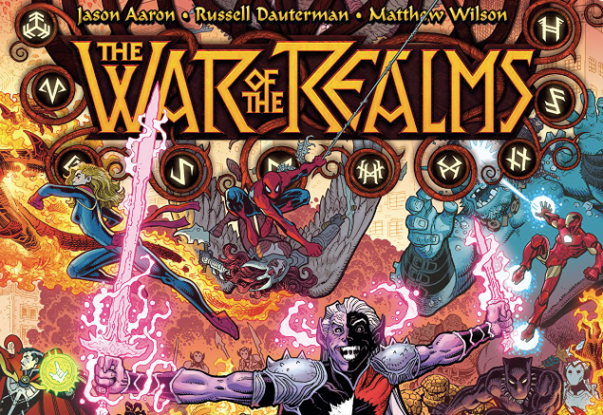
Let me give some context. To most people, Thor is a mythological character from the distant eras before Christianization. However, I’m not Christian. I was raised Jewish and today live a dual faith life. Part of my syncretic religious identity is worship of and honoring of the Norse gods, including Thor. While I do not consider the Marvel character created by Stan Lee and Jack Kirby to be the same as the deity I worship, the clear influence of the original Teutonic myths on the Marvel character make it impossible to separate the two completely. Which, as a comics fan, is often a difficult phenomenon, especially when Marvel keeps hammering in the similarities.
Anytime religious figures appear in works of fiction, there will be a mixed reception. Arguably, it is the duty of storytellers to try and be as respectful as possible of the religious figures and tales they represent, just as they arguably should work to be respectful of the cultures and people they portray (there are plenty of counterarguments also to be made). I love Neil Gaiman as a writer, and his comic The Sandman is what made me a comic fan, but his depiction of Thor left me feeling let down. Similarly, I have a friend whose expressed mixed feelings of authors portraying (and misportraying) elements of her religious practice with the Orishas. Any book involving characters like Jesus, Muhammad, Siddhartha Buddha, or Lucifer is also likely to be controversial. Fictional works featuring deities from polytheistic religions often tend to be less than interested in exploring the religious and ethical precepts associated with these figures as they treat the characters with the same reverence that the movie Jesus Christ Vampire Huntershowed toward a certain Nazarene carpenter. This is just the nature of writing stories about religious figures.
No, Marvel’s character Thor is not the god Thor. I can enjoy a comic and separate the two in my mind. What makes Aaron’s writing so difficult for me is that he makes an effort to connect the Marvel character back to the original myths in a way few authors have attempted. The first page of Thor: God of Thunder opens in Viking-Age Iceland, and throughout the run of the comic, Aaron frequently uses Old Norse words as the character sails around with a crew of Vikings, even encountering deities from the Slavic pantheon worshipped concurrently with the Norse gods by peoples who warred, traded, and sailed with the Vikings. Aaron seems to genuinely try to be respectful of the original Norse lore as much as possible within the context of writing a Marvel superhero. Plus, it’s a well-written story!
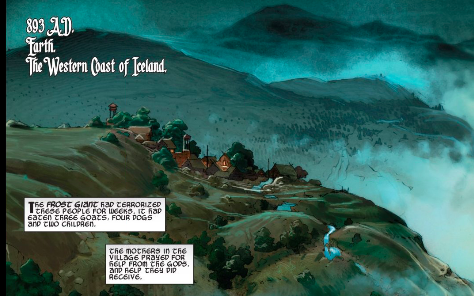
Later during his run, Jason Aaron met with controversy when he made the character of Jane Foster into a magical superhero who assumed the mantle of Thor. Many reacted negatively to this for a variety of reasons. The worst of fandom erupted in hateful reactionary rhetoric attacking the diversity of Marvel heroes. It should go without saying (but sadly, still needs to be said) that such hate speech is both condemnable and an invalid form of literary critique. But there were other critiques to be made about this creative decision. I personally found the decision to use the name “Thor” as a superhero title rather than a personal name to be a jarring change (the original character Thor was referred to as Odinson during this title). However, this began a new era for the comic where Aaron partnered with Russell Dauterman. The Jane Foster Thor took on classic villains like the dark elf Malekith the Accursed and god-killing monster Mangog, smiting her foes in epic conflicts. (She also fought one of my favorite underused villains, Oubliette Midas, the Exterminatrix). The greatest of all her struggles during this time was her battle with cancer, a fight which sapped the strength from her but never broke her spirit.
Thor (both the original Marvel thunderer and Jane Foster) became involved in numerous major comic events, such as Original Sin, Secret Wars, and Secret Empire. Perhaps most significant to the character was the Original Sin story, in which secret histories of the Marvel universe were revealed. Jason used this as an opportunity to expand on the cosmography of the comics by adding a tenth mythical realm to that planar orrery of Marvel’s Asgardian characters. This tenth realm, Heven, was home to angels, just as Asgard was home to Asgardian gods and Jotunheim was the home of the frost giants.
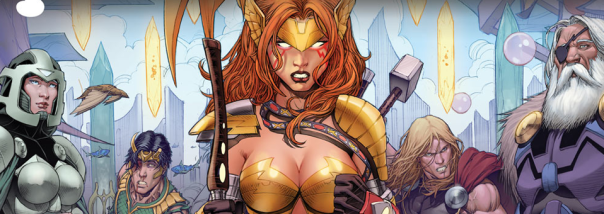
These realms are rooted in Norse myths which have passed down through the ages to us in the form of thePoetic Edda and Prose Edda. I don’t know if Jack Kirby ever read translations of these original Norse texts but their stories clearly inspired his work (meanwhile, Stan Lee, for all his talents, famously took credit for others’ work and during an interview with film maker and comics writer Kevin Smith, claimed to have just made up the word “Mjolnir,” then proceeded to mispronounce the word). Mjolnir, Asgard, Jotunheim, Valkyries, Valhalla—these are all part of the original religious cosmology of Germanic peoples, passed down orally through the generations and preserved in the written Old Norse accounts like the Eddas during the thirteenth century.
It is the way Jason Aaron connects his Marvel scripts to the original Old Norse lore that makes his run so noteworthy, and nowhere is this better exemplified than in the opening of War of the Realms.
The first page is black with superimposed text. Now, comic writers and artists are often paid by the page. A quick way some writers have found to get more content is to put text on blank pages, often creating dramatic beats, as Aaron does here. But just look at this powerful opening where we see the words reach back into the dawning of the world and echo through the ages like the sagas of old.
Aaron’s narration cuts through the dark even as it reminds us that everything began in darkness: “IN THE BEGINNING, THERE WAS ONLY DARKNESS. THE GREAT UNENDING NOTHINGNESS OF THE YAWNING VOID.”
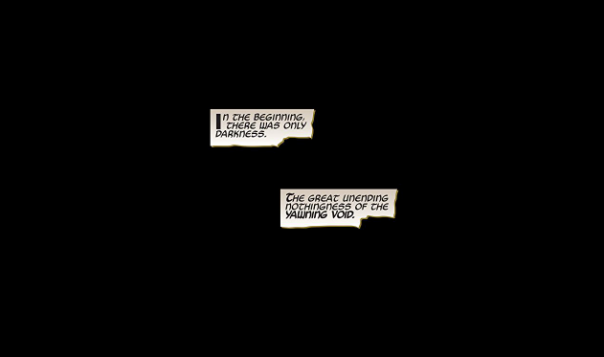
This is directly harkening back to the story of the Ginnungagap, or the Yawning Void, which the Icelandic poet Snorri Sturlusson described in the section of the Prose Eddaentitled Gylfaginning, or The Beguiling of Gylfi. According to Arthur Gilchrist Brodeur’s 1916 translation of Snorri, “Ginnungagap, the Yawning Void … which faced toward the northern quarter, became filled with heaviness, and masses of ice and rime, and from within, drizzling rain and gusts; but the southern part of the Yawning Void was lighted by those sparks and glowing masses which flew out of Múspellheim.”
Notice how Aaron’s script succinctly repeats these words for modern audiences: “THEN FROM THE SOUTH CAME ROARING FIRE. AND FROM THE NORTH SWIRLING ICE AND MIST.”
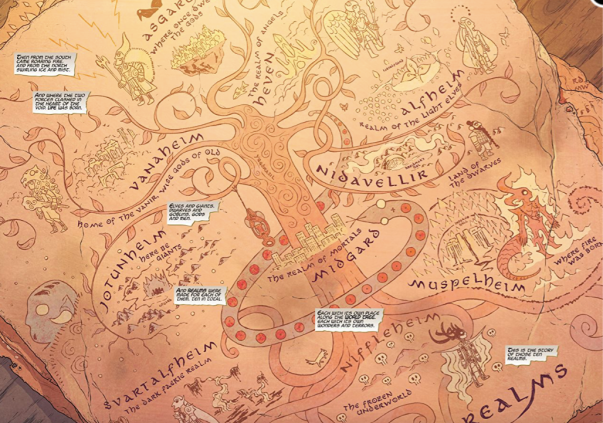
Notice also Dauterman’s map, showing the Nine Realms of Norse cosmology. There is also Heven, the tenth plane which I mentioned earlier. But what I love about this is that bothcreators are actually invoking the Eddas in this opening! That stylized manuscript page might have some familiar details Marvel fans will note (like portraying Hel with a horned helm or featuring a certain wall-crawling smart-mouthed superhero from Queens dangling from a branch), but the page is actually drawn to recreate the style of medieval manuscripts. Just look at the image below from the Codex Regius—a medieval tome containing one of the oldest surviving versions of Snorri’s Prose Edda—and tell me you don’t see the similarities to Dauterman’s illustration.
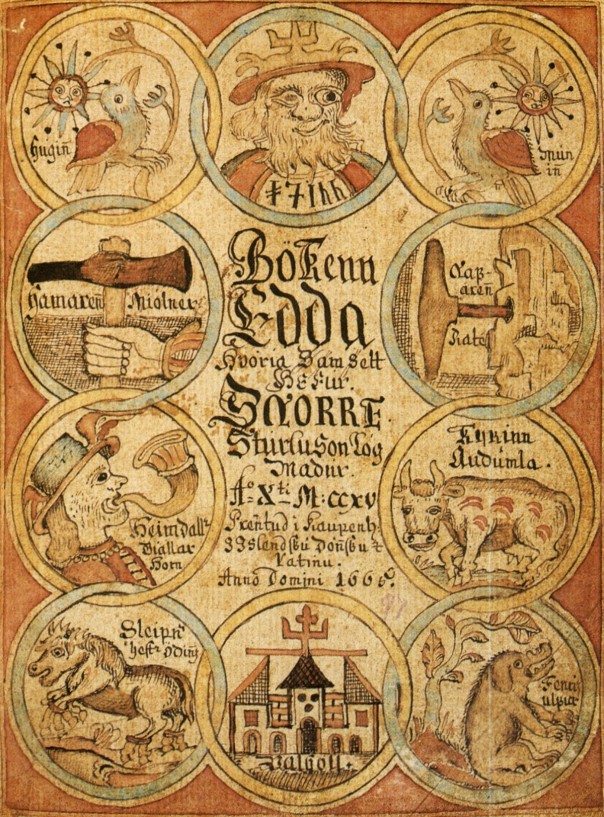
I do not want to spoil much of the story. As the title indicates, there is a war between the different realms which comprise Marvel’s interpretation of Norse cosmography. The final battlefield is Midgard—that is, Earth—which becomes invaded by various hostile forces, such as the fire-giants of Muspelheim and the dark elves of Svartalfheim. The Avengers, known as Earth’s Mightiest of Heroes, are completely overwhelmed by the might and magic of foes far stronger than anything they can contend with. It is essentially a superhero story.
Except, this doesn’t feellike just another superhero story. On the surface, it could be compared to The Kree-Skrull War or Secret Invasion or Age of Ultron or Infinity or however many other Marvel stories where an invading alien force wreaks havoc on Earth and completely overpowers the various superheroes sworn to protect it. There are, after all, a finite number of stories out there, and an even more finite number involving costumed superhumans solving their problems with violence. What makes this feel unique is the way Jason Aaron and Russell Dauterman really work to root this tale as much in the Old Norse tradition of the lore as the rest of the Marvel Universe. Often, when comic creators try to draw on medieval elements, it feels hackneyed. Not so here. Rather, all the elements seem to fall into place with huge battles, tragic twists, and a deep history all unfolding on the page.
At no point has Jason Aaron delivered a bad or even mediocre story in his run on Thor. Even when I’ve had personal reasons not to love the work, it has been consistently strong. But the clash of blades and the maelstrom of battle featured here make War of the Realms a cut above most comic events. The story has just one issue out at the time of my writing this, but in that issue, Aaron and Dauterman have achieved something worthy of the skalds’ praise.